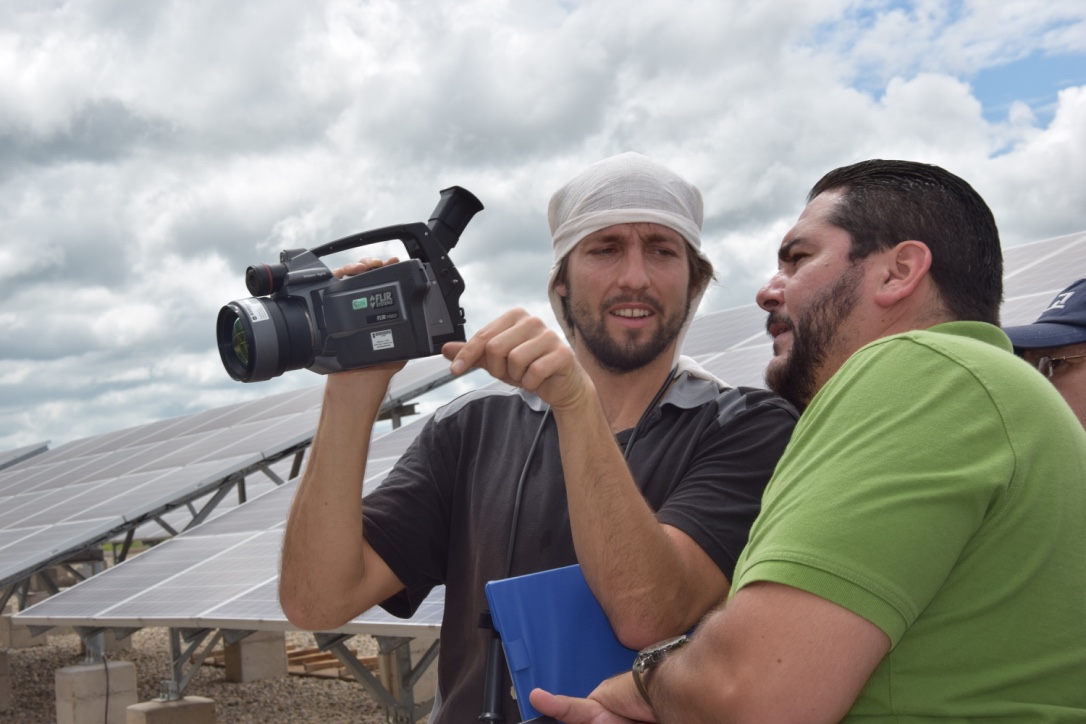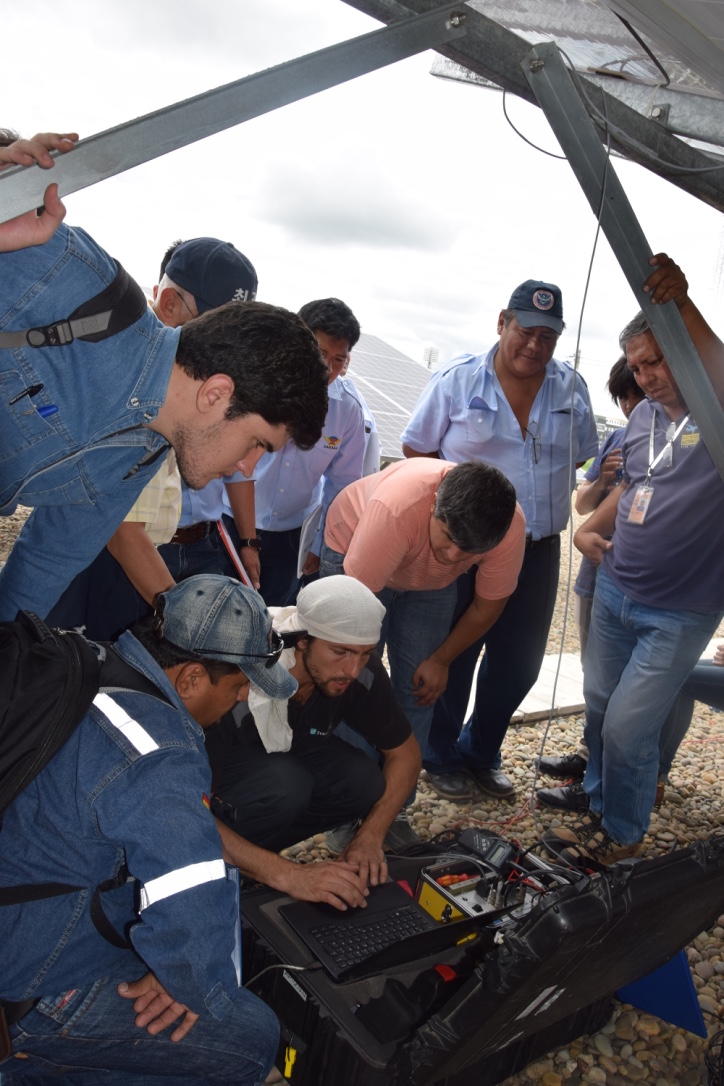Fraunhofer ISE Imparts Solar Expertise in Bolivia
Benjamin Knödler, project manager and employee of the Fraunhofer Institute for Solar Energy Systems ISE was in Bolivia on behalf of the GIZ, a provider of international cooperation services for sustainable development and international education work. Together with Georg Hille, a former employee of Fraunhofer ISE, Knödler gave training courses on photovoltaic (PV) systems within the program “Programas de Energia Renovables.”


At the University in La Paz (UMSA), Benjamin Knödler gave a training course attended by university professors, employees of grid regulatory authorities and relevant businesses. The course content focused on the basics of solar radiation and the layout, testing, measurement and financing of PV systems.
A second practice-relevant training course was held for 30 technicians in Santa Cruz de la Sierra, Bolivia’s largest city. On location at the 315 kW PV plant at the Viru Viru airport, the German experts demonstrated the measurement methods used to examine solar PV systems and explained how to analyze the results. The technicians were then able to practice with the measuring instruments such as the thermal imaging camera and the power meter. “Teaching the training course was a super experience for me, both personally and professionally. We were given a warm reception and great interest was shown by all participants. Instead of a strict lecture format, much information was exchanged in dialog with the participants, for example, by answering their questions,” reported Benjamin Knödler, who visited Bolivia for the first time this trip.
The potential for solar energy utilization is good in Bolivia. The annual irradiation ranges between 1300 and 2700 kilowatt-hours per square meter, which is among the highest of any country in Latin America. “Bolivia’s different climate zones are especially interesting and present special challenges for the layout of the PV system as well as the choice of components. On the high plateau with its thin, dry air and moderate temperatures, irradiation levels of ca. 1200 watts per square meter are reached. On the other hand in the low lying regions, PV plants are exposed to humid tropical climates and high temperatures throughout the year,” explained Benjamin Knödler.
Last modified: